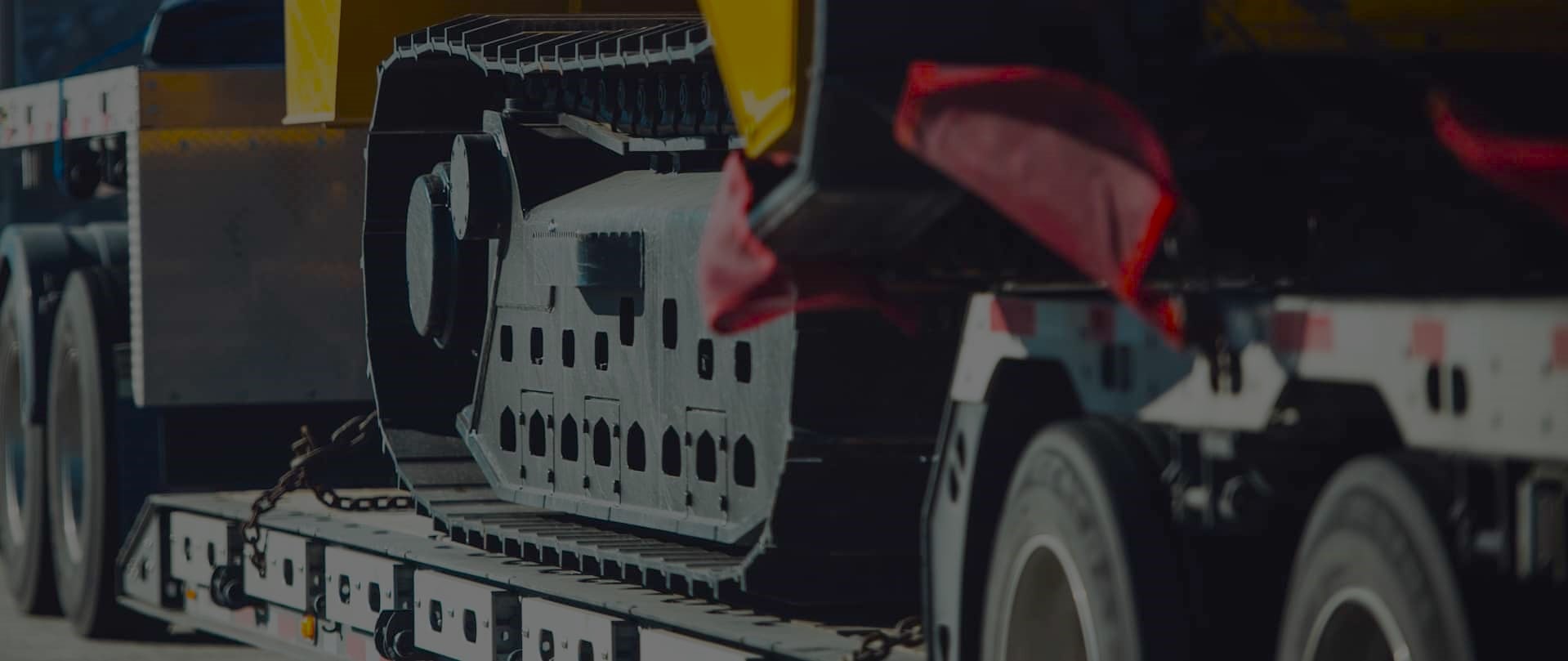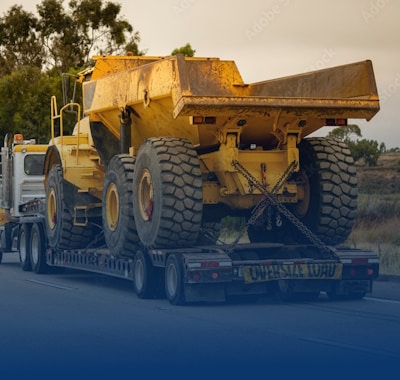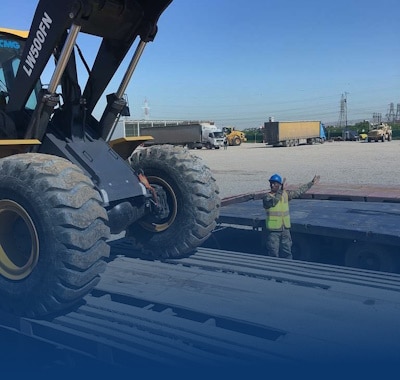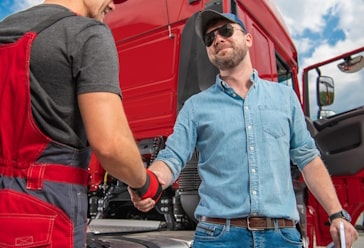Load Balancing Tips for Transporting Equipment Safely
Freedom Heavy Haul can offer expedited Pickup and Delivery for any size shipment anywhere in the USA. Contact us today for No Hassle, No Pressure Pricing.
Mastering load balancing is key when moving heavy equipment. We’ll share important tips for safe transport. Knowing how to distribute weight makes transport safer and cuts down on accident risks.
Effective load management is vital. It keeps your team and cargo safe. We’ll guide you through load balancing complexities, including calculating the load center of gravity. This will help you follow safe transport practices.
For more on ensuring equipment safety during transport, check out our comprehensive guide.
Understanding Load Balancing in Equipment Transport
Load balancing is key to keeping equipment safe during transport. It means spreading the weight evenly across the vehicle for better stability. If the load is not balanced, it can tip or shift, which is very dangerous.
It’s important to know the center of gravity and the vehicle’s specs for good load management. This knowledge helps avoid accidents and ensures safe transport.
We stress the importance of following equipment transport guidelines that cover these points. By understanding how to distribute the load, transporters can make safer choices. This leads to more efficient and secure hauling of heavy machinery.
Load Balancing Tips for Safe Equipment Transport
Effective load balancing is key for safe heavy equipment transport. We must first assess the weight distribution needs. Knowing how the load’s weight and size affect its placement on the vehicle is crucial. This ensures safer and more efficient transport.
By following some load balancing tips, we can make journeys smoother. We also meet regulations better.
Identifying Weight Distribution Needs
Identifying weight distribution needs requires a detailed look at the equipment. We need to know its weight and size to place it right on the vehicle. Tools like weight scales help get the exact load specs.
Proper load distribution is essential for keeping the transport stable.
Calculating Load Center of Gravity
Calculating the load center of gravity is vital for safe transport. It checks how weight is balanced, affecting how the vehicle moves. A balanced load reduces the chance of tipping or shifting.
Understanding the center of gravity helps us distribute the load better. This improves stability. For more on this, see this guide on transporting heavy construction equipment.
Best Practices for Equipment Transport Safety
When moving heavy equipment, knowing safety rules is key. Good practices protect the machines and keep people safe. Securing loads is a big part of keeping everything safe during transport.
Importance of Securing Loads
Securing loads is very important. Unsecured loads can cause big problems on the road. We suggest using strong tie-downs and straps for heavy machinery. This keeps the equipment stable and safe, following best practices.
Choosing Appropriate Transport Equipment
Picking the right transport gear is crucial. The vehicle must fit the load size and follow weight rules for safety. The right trailer or truck keeps the equipment safe and moves it well. We look at the load size, weight, and trip to choose wisely and avoid risks.
| Transport Equipment Type | Load Capacity | Recommended Use |
|---|---|---|
| Flatbed Trailer | Up to 48,000 lbs | General heavy equipment transport |
| Lowboy Trailer | Up to 40,000 lbs | Transporting tall or oversized equipment |
| Enclosed Trailer | Up to 10,000 lbs | Protection from elements for smaller machinery |
Load Balancing Techniques to Enhance Safety
Effective load balancing techniques are key to keeping equipment safe during transport. By using specific methods, we can lower risks of heavy hauling. Two main strategies are using weight distribution hitches and proper strapping methods.
These practices boost safety and make the journey more efficient.
Utilizing Weight Distribution Hitches
Weight distribution hitches are crucial for stabilizing loads on the move. They spread the trailer’s weight evenly across the towing vehicle. This reduces the chance of swaying and losing control.
They work well for different types of equipment transport. This ensures forces are evenly distributed, making roads safer.
Implementing Proper Strapping Methods
Strapping techniques are also essential for securing loads safely. Ratchet straps help keep equipment stable during transport. Secure knotting methods add to the hold, preventing loads from shifting.
Together, these strapping methods improve safety and make transport smoother and safer.
Key Equipment Transport Guidelines
Following strict equipment transport guidelines is key for safety and efficiency. First, do a detailed check before moving anything. This makes sure the load and vehicle are safe to go.
Writing down load details and routes helps team members talk better. This paper trail keeps everyone informed about weight limits and safe paths. Good communication is vital for safe and smooth transport.
Using special lanes for big equipment cuts down on risks. These lanes are made for heavy vehicles, avoiding problems with regular traffic. Following these rules helps keep everyone safe and makes transport reliable.
| Guideline | Description |
|---|---|
| Pre-Transport Inspections | Regular checks of equipment and vehicles to confirm they meet safety standards. |
| Documenting Load Details | Recording specifications and route plans for effective team communication. |
| Designated Transport Lanes | Using specific lanes designed for heavy equipment to minimize risks. |
| Safety Training | Continuous education for personnel on safe handling and transport procedures. |
Essential Equipment Transport Safety Measures
It’s key to have safety measures in place for equipment transport. We stress the need for thorough checks and training to handle risks well. This way, we protect both people and equipment during transport.
Regular Inspection of Transport Equipment
Checking transport equipment regularly is crucial. It helps spot problems early. We recommend a strict schedule for these checks. Look at:
- Structural integrity of trailers and vehicles
- Condition of tires and brakes
- Operational status of lifting and securing devices
These steps not only boost safety but also extend the life of transport gear.
Training Personnel on Safe Handling Techniques
Teaching staff about safe handling is essential. A knowledgeable team can handle different situations better. Key training points include:
- Proper loading and unloading practices
- Effective communication during transport
- Use of personal protective equipment (PPE)
By following these tips, we create a safe work culture. Everyone knows their part in keeping transport safe.
Understanding Equipment Transport Weight Management
Managing the weight of equipment during transport is key to safety and efficiency. It’s important to set maximum load limits. This keeps vehicles within their safe capacity, avoiding accidents caused by overload.
Establishing Maximum Load Limits
We must set clear load limits for each vehicle. This means knowing the transport equipment’s specs and limits. Using load balancing techniques improves stability and lowers accident risks. Sticking to these limits helps drivers control their vehicles better, keeping everyone safe.
Common Weight Misconceptions in Transport
Many think estimating load weights is simple. But, things like equipment setup and extra accessories can change the total weight. Wrong guesses can lead to poor weight distribution and safety risks. Education and following best practices can clear up these misunderstandings, making transport safer. For more on keeping equipment safe during transport, see this guide on load balancing tips.
Techniques for Effective Load Distribution
Effective load distribution is key for safe and secure equipment transport. Using specific techniques helps a lot. Keeping heavier items low and centered in the vehicle is a must. This keeps the vehicle stable and follows safety rules.
It’s also important to make sure loads fit the vehicle’s limits. Each vehicle has its own weight and size rules. Following these rules lowers the chance of accidents. Using ramps and dollies makes loading and unloading easier and safer for everyone.
Learning these load distribution techniques makes equipment transport safer and more efficient. It also builds trust in our hauling services. For more safe transport tips, check out this guide on transporting construction equipment safely.







